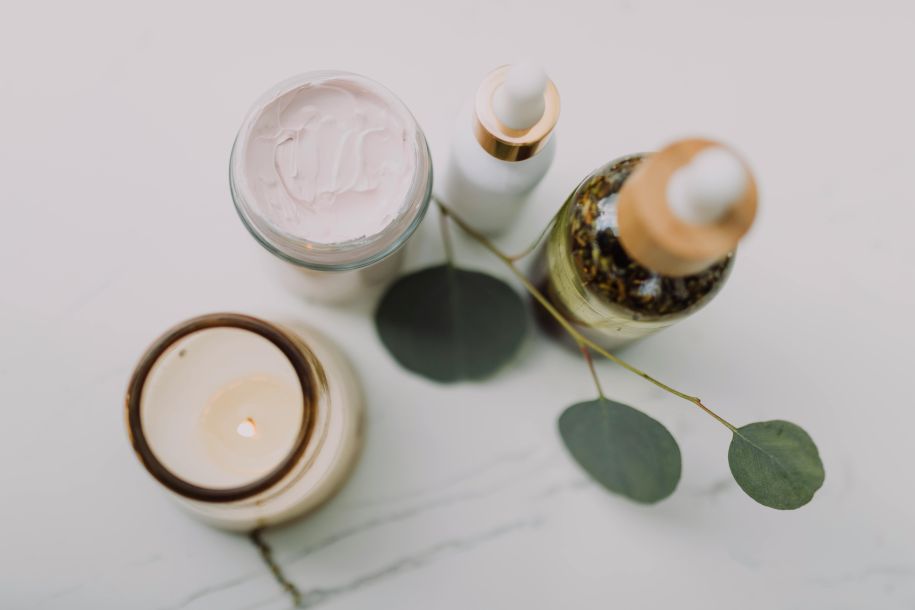
When my oldest son was a baby, I started paying better attention to ingredients in products. It sort of became an obsession for me. I was on a message board (I think it was “The Nest”) with other moms who would offer advice and exchange ideas. We came from various backgrounds across the US and had different opinions on parenting and we learned a lot from each other.
I remember there being a lengthy discussion about sunblock for babies and kids. Most of us used Neutrogena at that time. Luckily, one of the moms spoke up about a database called EWG (Environmental Working Group.) The non-profit website ranks products based on their ingredients. Sure enough, the Neutrogena sunblock I had been using had toxic ingredients and didn’t score very well. From that day on, I’ve utilized the database considerably.
The EWG is rather strict, but for good reason. The skin is the largest organ in the body and absorbs a decent amount that it comes in contact with. However, it doesn’t absorb “everything” like some people say since the skin is considered protective. The “Skin Deep” database doesn’t include every product known to man, but for the most part, features a considerable amount. It’s been very helpful to me and I’m grateful that I have someplace reliable to use as a reference.
This is pretty scientific stuff, in my opinion, and since it’s not my area of expertise, I’ve been relying on this database to make decisions. Products are ranked by ingredients, so a score of 0 is non-toxic and considered “EWG Verified.” Click here to see how EWG determines the scores. The ingredients are evaluated to see if they are detrimental to the body and if there are cancer risks, irritants, or hormone disruptors. They also analyze how products are made.
Manufacturers tend to change ingredients so even if you’re using a “healthy” option now, its recipe could be modified later. Checking the database periodically is a good idea. Many of the private companies don’t share their ingredients so it’s impossible to know what they’re incorporating into the items.
I would recommend individuals start researching their products one at a time. I wouldn’t necessarily throw everything out but instead gradually phase out products as you learn more about the ingredients. Start with those that you use the most often. As a rule of thumb, I look for products that have a score of 3 or less. The products with a “0” ranking are sometimes limited when it comes to availability, and they can be difficult to locate in stores.
I am not a fan of the pop-ups on the EWG website, as they drive me slightly crazy. EWG does offer an App that I haven’t tried yet. This would be really helpful if you’re at a store and trying to figure out what to buy. You won’t have to memorize ingredients since the App would do the work for you. I tend to buy my toiletries and cosmetics online, so the website works for me.
Some believe the EWG is too harsh and creates unnecessary alarm. Personally, even if they’re overly conservative, I’d rather error on the side of caution. We already know how toxic our food is, so it’s not surprising that personal care and hygiene products are suspect too. This article talks about other databases that you can use. I did a few searches, and the results were similar to EWG. If anything, these databases can give you a starting point and a general idea as to what is good or what needs to be “swapped out.”
Harvard Health states that women use at least 12 personal care products per day and the number is higher for teen girls. There will be occasions when you don’t have enough time to read labels or look up a product in a database so not every purchase will be perfect. Once you start learning about “cleaner” products, you’re buying habits will become automatic as you familiarize yourself with certain brands.
Eliminating unhealthy chemicals is a good idea for overall health and wellness, so make it a priority! The more you educate yourself the better off you’ll be in the long run. I’m grateful that another mom introduced me to the EWG database where I’ve been able to make informed decisions for the last 15 years.
Sign up for my free monthly newsletter at the bottom of my blog or reach out to Kim anytime to nourishandflex@gmail.com
Photo by: RDNE Stock Project


